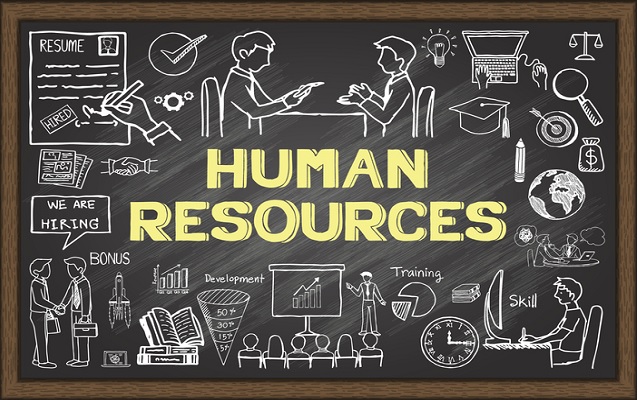In today’s rapidly changing business landscape, hiring for innovation has become essential for companies to stay competitive. As the gatekeepers of an organization’s talent pool, HR departments play a pivotal role in shaping a forward-thinking workforce. Building a workforce with a focus on HR innovation hiring ensures that organizations not only meet current demands but are also prepared for future challenges.
As a top keynote speaker on creativity and innovation, I help HR professionals understand how strategic hiring can foster a culture of innovation, unlocking new growth opportunities across their organizations. Let’s dive into how HR can lead the way in building an innovative, resilient workforce—and why it’s crucial in today’s workplace.
Why Hiring for Innovation is Essential
When organizations hire with a focus on innovation, they’re not just filling roles—they’re laying the foundation for future success. Traditional hiring processes often prioritize experience over creativity, making it difficult to build a workforce capable of tackling modern challenges. HR innovation hiring means looking beyond traditional qualifications to identify candidates who bring new ideas, adaptability, and a growth mindset to the table.
Innovation in hiring is especially crucial as organizations face disruptions like rapid technological change, global competition, and shifts in workforce expectations. A forward-thinking workforce embraces change and seeks creative solutions, giving companies the agility they need to thrive.
“Innovation distinguishes between a leader and a follower.” – Steve Jobs
The Role of HR in Cultivating an Innovative Workforce
To create an innovative workforce, HR professionals must foster an environment that encourages creativity, problem-solving, and collaboration. Here are some key strategies HR can implement to hire for innovation:
1. Identify and Prioritize Growth Mindsets
A growth mindset is the foundation for innovation. Employees with a growth mindset see challenges as opportunities to learn and improve. HR departments can prioritize hiring individuals with this mindset by incorporating interview questions that assess a candidate’s adaptability and openness to feedback.
Scenario Example:
An HR team at a tech company is hiring for a project manager position. In the past, they’ve focused on candidates with extensive industry experience. Now, they pivot to prioritize candidates who demonstrate problem-solving skills, curiosity, and adaptability. Instead of asking purely technical questions, they ask candidates to describe how they handled unexpected setbacks in previous roles.
For more on fostering growth mindsets, explore this SHRM article on HR’s role in growth.
2. Develop a Skills-Based Hiring Approach
In traditional hiring, many HR departments rely on role-specific experience as a key criterion. However, innovation demands versatility and a willingness to learn. Skills-based hiring focuses on identifying transferable skills that can support innovative thinking, like critical analysis, creativity, and collaborative problem-solving. This approach allows HR teams to identify candidates who are adaptable and open to learning, even if their previous experience isn’t a perfect match.
Scenario Example:
A healthcare company wants to hire a manager for their new telehealth services team. Instead of limiting candidates to those with healthcare experience, they seek candidates with strong customer service skills, digital adaptability, and project management expertise. By broadening their criteria, they hire a candidate with experience in tech and a knack for leading remote teams—skills that align perfectly with the innovative direction of telehealth.
3. Create an Interview Process That Encourages Creative Thinking
The interview process itself can reflect the company’s commitment to innovation. Rather than asking standard questions, HR can incorporate problem-solving exercises, hypothetical scenarios, and brainstorming sessions into interviews. These methods can reveal a candidate’s creative potential and give insight into how they approach challenges.
Scenario Example:
In a creative agency, the HR team asks candidates to work through a real-world problem during the interview. This exercise allows the agency to evaluate the candidate’s approach, creativity, and ability to collaborate—all essential skills for innovative work.
“Hire people who are better than you are, then leave them to get on with it.” – David Ogilvy
How HR Drives Continuous Innovation Within the Workforce
Once HR hires individuals with a passion for innovation, the next step is to create an environment that nurtures and sustains this culture. Here’s how HR can drive ongoing innovation among employees:
1. Foster a Collaborative Environment
Encouraging collaboration breaks down silos and enables employees to share ideas across departments. This cross-pollination of ideas is essential for innovation. HR can facilitate collaboration by implementing shared workspaces, cross-functional projects, and regular brainstorming sessions.
Scenario Example:
An HR team in a manufacturing company creates cross-departmental teams to work on process improvement projects. By connecting employees from different areas of the company, they inspire fresh perspectives and creative solutions to operational challenges.
2. Embrace Continuous Learning and Development
Encouraging continuous learning is critical to keeping innovation alive. HR can provide resources, workshops, and training sessions to help employees stay up-to-date with industry trends, gain new skills, and remain engaged.
For more insights on building HR strategies that support future growth, check out this article from McKinsey.
3. Recognize and Reward Innovation
When employees feel their contributions are valued, they’re more likely to contribute creatively. Recognizing innovative ideas and efforts can encourage employees to continue thinking outside the box. Recognition programs, innovation awards, or even a shout-out in a team meeting can reinforce the importance of creativity in the workplace.

Why Julie Austin is the Keynote Speaker to Transform Your Workplace
As an authority on creativity and innovation, I bring real-world insights to organizations looking to unlock the potential of their workforce. I help HR leaders understand the nuances of innovation and how hiring for creativity can bring a new level of productivity and engagement to their teams. By bringing in a fresh perspective and disrupting outdated processes, I show organizations how they can embrace HR innovation hiring to become leaders in their industries.
For more on how creativity can elevate your team’s productivity, see my article on unlocking employee potential. Bringing me into your organization as a keynote speaker could be the game-changing move that drives true transformation in your team.
FAQs
1. What is HR innovation hiring?
HR innovation hiring is a strategy that focuses on hiring individuals with a growth mindset, adaptability, and creative problem-solving skills. This approach prioritizes candidates who bring fresh perspectives and can drive innovation within the company.
2. How can HR foster a culture of innovation?
HR can foster innovation by encouraging a growth mindset, supporting cross-functional collaboration, offering continuous learning opportunities, and creating a recognition system for creative contributions.
3. Why is hiring for innovation important in today’s business environment?
With rapid changes in technology, customer expectations, and industry landscapes, hiring for innovation ensures that the organization remains agile, adaptable, and capable of meeting evolving challenges.
4. What are some common obstacles to hiring for innovation?
Traditional hiring practices that focus heavily on experience over skills, rigid role requirements, and resistance to change can hinder efforts to hire for innovation. Shifting to a skills-based, growth-oriented hiring approach can overcome these obstacles.
5. How can a keynote speaker help with building an innovative workforce?
A keynote speaker brings fresh insights, actionable strategies, and a new perspective to inspire employees and leaders to embrace innovative thinking. By disrupting old patterns, a speaker like Julie Austin can energize your team and set the stage for a more forward-thinking workforce.
Conclusion
In the age of digital transformation and constant disruption, building a forward-thinking workforce isn’t just beneficial—it’s essential. With HR innovation hiring, companies can attract and retain talent that brings creativity, adaptability, and problem-solving skills to the table. By shifting from traditional hiring practices to a more forward-thinking approach, HR departments can play a crucial role in driving company-wide innovation and resilience.
For companies ready to take the leap, consider bringing me in to guide your team on the journey to becoming a truly innovative workplace. To learn more, visit Creative Innovation Group and see how we can work together to build a dynamic, future-ready workforce.

